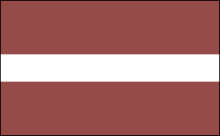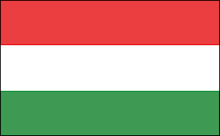

Wyświetl większą mapę
Škofja Loka to jedno z głównych miejsc do zwiedzenia w Słowenii. Nie miałem szczęścia, bo lało prawie cały mój pobyt, więc zdjęcia są raczej mokre, ale to nie ujmuje uroku miasteczku :) Škofja Loka ma 18.000 mieszkańców i jest stolicą okręgu. Jej nazwa oznacza Biskupią Skałę \ Łąkę, od funkcji pierwszego właściciela miejsca, bawarskiego biskupa Abrahama z 973. W 1274 Škofja Loka otrzymała prawa miejskie, a samo miasto otoczono murami z 5 bramami. Pod okiem biskupów miasto doskonale się rozwijało, jednak w 1511 legło w gruzach z powodu trzęsienia ziemi. Później na miasto najeżdżał hrabia Celje, czy Turcy i miasto znacznie podupadło. W 1803 właścicielami zostali Habsburgowie. Zachował się jednak cały zespół miejski i dziś przyjeżdża tu sporo turystów, tym bardziej, że do stolicy niedaleko.
Škofja Loka is one of the main sightseeing points in Slovenia. I wasn't lucky, because it rained all the time, so the photos are rather wet, but still the town is pretty :) Škofja Loka has got 18.000 inhabitants and it's a capitol of the region. The name means Bishop's Rock \ Meadow taken from the first owner's function, bishop Abraham from Bavaria in 973. In 1274 Škofja Loka gained town rights and the town was surrounded with the walls with 5 gates in'em. The city developed quite good under the bishops' reigns, but it was destroyed by a strong earthquake in 1511. Then it was conquered by count Celje and Turks and fell apart. In 1803 Habsburgs became the owners. The whole urban design is preserved and there are many tourists coming to see the town, what's more, it's close to the capitol...
 Jedna z uliczek starej części.
Jedna z uliczek starej części.One of the streets in the old part.

 Kościół i klasztor Klarysek
Kościół i klasztor KlarysekPowstał w 1358, przebudowany po pożarze w 1669. Dziś zajmują go urszulanki.
Church and monstery of Poor Clares
It was built in 1358, redecorated after the fire in 1669. Today, it belongs to the Grey Ursulines.

 Figura MB przy kościele klarysek
Figura MB przy kościele klarysekFigure of St. Mary in the Poor Clares' Church

 Kościół św. Jakuba
Kościół św. JakubaPowstał ok. 1471.
Church of St. Jacob
Built ca. 1471.
 Dom Homana
Dom HomanaRezydencja odnowiona w 1511 z freskami ze św. Krzysztofem i rycerzem.
Homan's House
A residential house, renovated in 1511, with frescos of St. Christopher and a Knight

 Rynek w kierunku kościoła św. Jakuba z domem plebanii
Rynek w kierunku kościoła św. Jakuba z domem plebaniiA Main Square in st. Jacob's church direction.
 Studnia na rynku
Studnia na rynkuA well on a market square.
 Jedna z pięknie odnowionych kamieniczek na rynku (Mestni Trg)
Jedna z pięknie odnowionych kamieniczek na rynku (Mestni Trg)One of the beautiful renovated houses in Mestni Trg (Main Square)
 Posąg Marii
Posąg MariiUstawiony w 1751 jako votum za uratowanie od zarazy.
Mary's monument.
From 1751, as a thank for surviving the epidemy.



 Spichlerz
SpichlerzGrananry
 Zamek biskupi
Zamek biskupiBishops' castle
 Widok na miasteczko spod zamku
Widok na miasteczko spod zamkuA view on the town from the castle.
 Dziedziniec zamkowy
Dziedziniec zamkowyCastle court
 Zamek
ZamekThe castle
 Nowsza część Škofja Loka
Nowsza część Škofja LokaNewer part of Škofja Loka
 Tradycyjna słoweńska chałupa nieopodal zamku.
Tradycyjna słoweńska chałupa nieopodal zamku.Traditional slovene house near the castle.
 Starówka
StarówkaOld town
 Klasztor Klarysek po lewej i budynki starówki
Klasztor Klarysek po lewej i budynki starówkiMonastery of Poor Clares on the lefthand side and houses of the Old Town.


 Wodospad i młyn
Wodospad i młynA waterfall and a mill.
 św. Jan Nepomucen na moście Kapucyńskim
św. Jan Nepomucen na moście KapucyńskimSt. John Nepomucen on Capuccins' bridge.
 Nad rzeką Sawą są stare kamieniczki, w jednej z nich jest świetny hotelik Garni (ten z banerem - okna wychodzą na rzekę i starówkę!)
Nad rzeką Sawą są stare kamieniczki, w jednej z nich jest świetny hotelik Garni (ten z banerem - okna wychodzą na rzekę i starówkę!)Over the river Sava there are some old houses, in one of them there's a small, nice hotle Garni (this one with a banner - a view from the window is on the river and old town!)

 Kościół Kapucynów
Kościół KapucynówCapuccins' church.


 Most Kapucynów
Most KapucynówCapuccins' Bridge
 Brama Poljane z wieżą strażniczą.
Brama Poljane z wieżą strażniczą.City gate.



















Brak komentarzy:
Prześlij komentarz